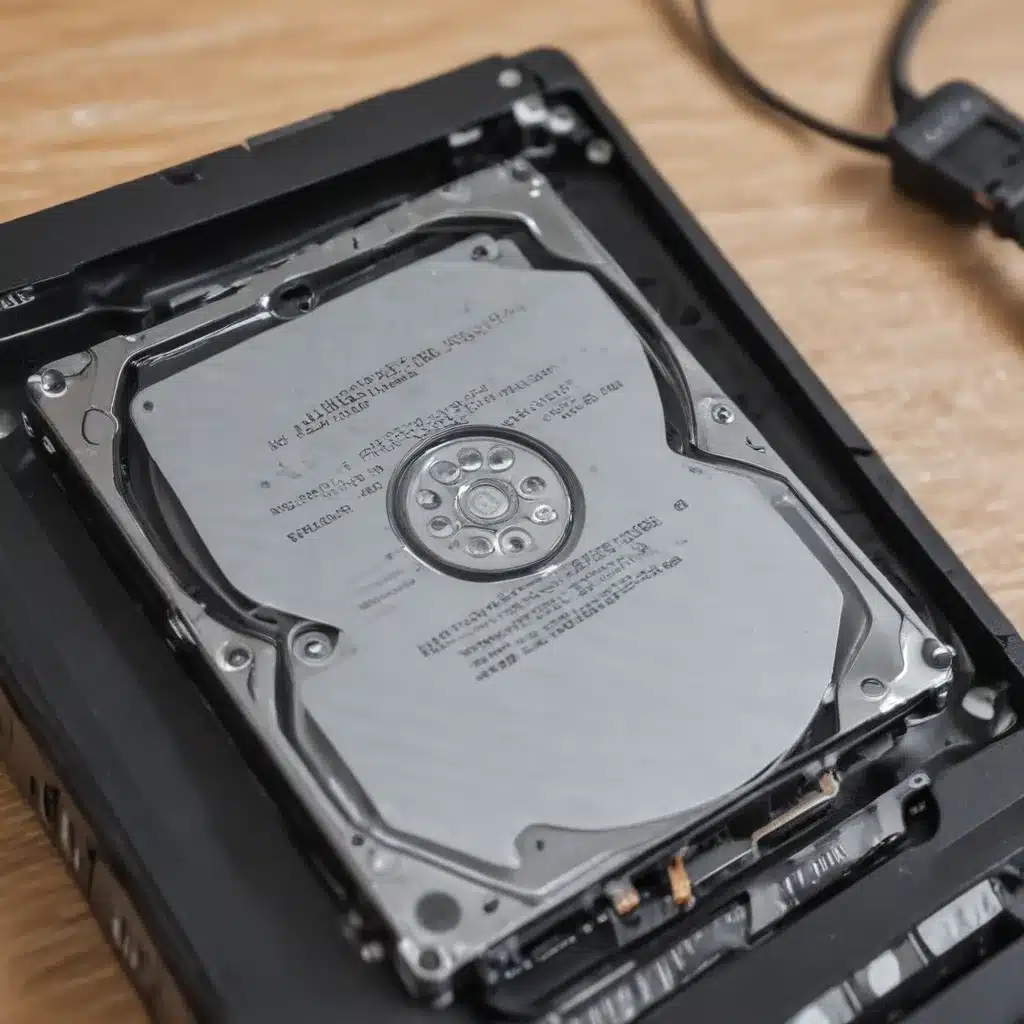Bring Your Dead PC Back to Life and Recover Those Precious Files
Oh, the dreaded moment when your beloved PC or laptop suddenly kicks the bucket, leaving you in a state of sheer panic. Your mind races, and the only thought occupying your brain is, “Where are all my important files?!” Trust me, I’ve been there, and it’s not a fun place to be.
But fear not, my technology-challenged friend, for I’m here to guide you through the exciting journey of recovering data from a dead PC or laptop. It’s like going on a treasure hunt, except the treasure is your irreplaceable family photos, important documents, and that unfinished novel you’ve been working on for ages.
Troubleshooting: Identifying the Culprit
Before we dive into the data recovery process, let’s take a step back and figure out what exactly went wrong with your device. A disk boot failure can be caused by a variety of reasons, such as a problem with the power supply, a faulty motherboard, operating system issues, or a logical error on the hard drive itself [1].
Now, don’t start hyperventilating just yet. These problems, while frustrating, can often be resolved with a little elbow grease and a healthy dose of patience. The key is to approach the situation with a calm and methodical mindset, like a seasoned detective on the hunt for clues.
Booting Into Safe Mode: The First Line of Defense
One of the easiest and most effective ways to recover data from a dead PC is by booting into Safe Mode [2]. In Windows 7 and earlier versions, you can do this by pressing the F8 key repeatedly during the boot process. If you’re rocking a newer machine with Windows 8 or 10, you’ll need to press the F8 or Shift+F8 keys instead [3].
Once you’ve successfully booted into Safe Mode, you can use the good old Windows Explorer to navigate through your files and copy them to an external drive. It’s like finding a hidden treasure map that leads you straight to your data.
Hacking with a Live Linux OS
If the Safe Mode trick doesn’t work for you, it’s time to bring out the big guns – a live Linux OS. By creating a bootable USB drive or optical disc, you can run a Linux distro without actually installing it on your machine [4]. This gives you the power to access your hard drive and salvage your files, even if your Windows installation is completely kaput.
Just imagine yourself as a secret agent, stealthily booting up your PC with a Linux Live USB and navigating through the file system like a pro. It’s a true James Bond-esque moment, minus the tuxedo and martini.
Turning Your Hard Drive into an External Powerhouse
Still no luck? Okay, let’s get a little more hands-on. One of the best ways to recover data from a dead PC is by removing the hard drive and using it as an external storage device [5]. This is particularly useful if your system doesn’t boot up at all, as it allows you to bypass the faulty components and directly access the drive.
To do this, you’ll need a SATA-to-USB adapter or an external hard drive enclosure. Simply pop the drive out of your PC, connect it to the adapter, and voila! You’ve got yourself a portable data recovery station. It’s like turning your hard drive into a superhero, ready to save the day.
The Nuclear Option: Professional Data Recovery Tools
If all else fails, it’s time to call in the big guns – professional data recovery software. One such tool that’s been a lifesaver for many is Kernel for Windows Data Recovery [6]. This powerful software can retrieve data from corrupt Windows partitions, damaged hard drives, and even permanently deleted files [7].
Using Kernel is like having a team of expert treasure hunters on your side. It can scan your drive sector by sector, uncover hidden files, and even restore data from an empty Recycle Bin [8]. And the best part? You can preview the recovered files before you save them, so you know you’re getting exactly what you need.
So, there you have it, folks – a treasure trove of techniques to recover data from a dead PC or laptop. Remember, data recovery isn’t a one-size-fits-all affair, so be prepared to try a few different methods. With a little bit of tech-savvy and a whole lot of determination, you’ll be reunited with your precious files in no time.
Now, if you’ll excuse me, I’m off to go rescue my latest novel from the clutches of a malfunctioning hard drive. Wish me luck!
[1] https://www.youtube.com/watch?v=ELfPmQ7BIag
[2] https://answers.microsoft.com/en-us/windows/forum/all/recovering-user-files-from-old-hard-drive-from/9c471a09-8731-4981-9e1a-575314c5e262
[3] https://www.youtube.com/watch?v=jaFI80h_rYk
[4] https://www.nucleustechnologies.com/blog/top-5-ways-to-recover-data-from-dead-computer/
[5] https://www.youtube.com/watch?v=FxmnKAX8w1I
[6] https://www.popsci.com/broken-computer-repair-recover-data/
[7] https://www.reddit.com/r/computers/comments/vaaprj/best_way_to_get_data_off_the_hdd_of_a_dead_pc/
[8] https://www.instructables.com/How-to-Recover-Data-From-a-Dead-Computer/













